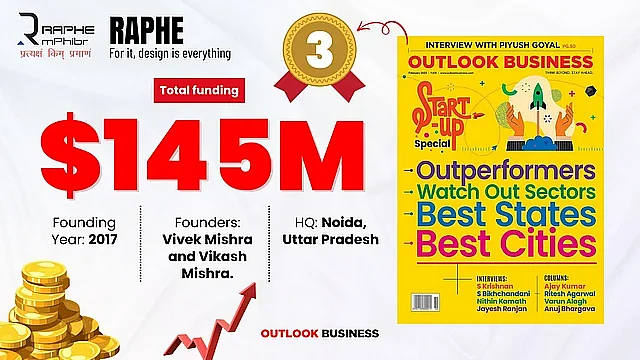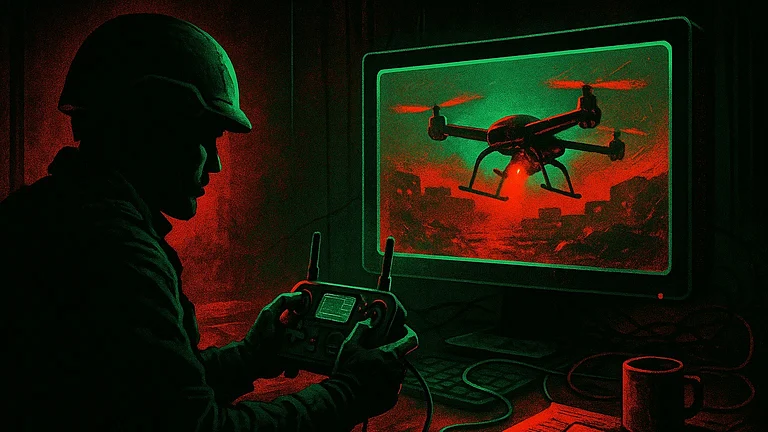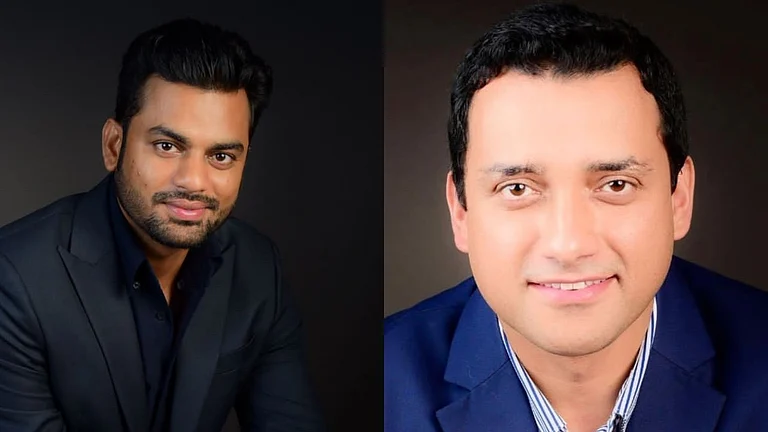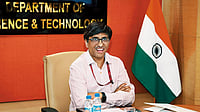Two brothers, thousands of miles from home, found themselves irresistibly drawn to machines. One gravitated toward the blueprints of aerospace and the intricacies of mechanical design; the other, toward the silent logic of circuits and robotics. Their classrooms, for a time, were American. But their ambition drifted elsewhere—to a restless India, to skies not yet mapped by indigenous flight, and to a quiet, shared conviction that something better than imported, borrowed, or licensed technology could be built.
In 2017, that conviction took shape as Raphe mPhibr—a name with little resonance then, in a country where unmanned aerial vehicles (UAVs) remained largely unimagined in the defence context. Policy frameworks were embryonic, procurement efforts nascent, and belief in a fully homegrown drone program almost non-existent. Still, Vivek and Vikas Mishra placed their wager: that India could master not just drone design but the manufacture of every critical component—engines, sensors, avionics—entirely in-house. It was a leap of faith beyond anything imagineered domestically at the time.
The company’s mission was, by design, countercultural. Where others outsourced the complex and costly subsystems, Raphe made a principle of end-to-end development. “From the very beginning, our focus has been on research and manufacturing. We have always believed that true innovation comes from building things ourselves, not by relying on transfer of technology (ToT), as it's commonly known. That’s a principle we have stood by,” Vivek explains.
Their approach was slow and methodical. Rather than rush to market or chase early revenue, the founders spent years engineering the core technologies, layer by layer, building and testing relentlessly before launching. By the time Raphe’s UAVs entered the field, they were no longer merely assembled platforms but truly indigenised systems.
Their portfolio now includes the mR20—engineered for high-altitude logistics in the remote Himalayas; the mR10, which lays claim to being the world’s first operational drone swarm; the compact Bharat drone for mountainous surveillance; and the X8, a maritime UAV designed for over-water patrols and coastal intelligence. Each model is tailored to the uniquely challenging demands of Indian defence operations.
Raphe mPhibr’s model—of vertical integration—has made it a preferred vendor for India’s armed and border security forces. A partnership with the Defence Research and Development Organisation (DRDO) ensures that innovation is not isolated, but built to integrate with the nation’s broader strategic infrastructure. “The aim is not isolation but integration—sharing what can be shared, institutionalising what works.”
Raphe’s campus is envisioned as a single, contiguous ecosystem: simulation, design, manufacturing, and testing coexist under one roof, which has since grown into a sophisticated hub blending precision engineering with advanced manufacturing. The company now holds close to 100 intellectual properties, spanning everything from swarm-control algorithms to propulsion materials and avionics.
Every component, Raphe insists, is built internally—from combustion engines to imaging sensors to navigation systems. “Every rupee of capital and hour of innovation stays within the country, absorbed into the domestic economy. The returns, both strategic and economic, are wholly Indian,” the team asserts.
The strategy is clearly working. In June Raphe secured $100 million in private funding—the largest such round in India’s defence-tech sector. According to financial data platform Tracxn, the funding round valued the start-up in the range of $850-900 million which is also the highest valuation in the country’s defencetech sector as yet.
For a company that shunned monetisation until its core systems were ready, the moment was vindication. The new capital is earmarked for a tenfold expansion in manufacturing: the target, over 300 compact UAVs and 150 high-altitude drones each month. Investments are flowing into electronics, software, and advanced materials, as production ramps.

The context is striking. Despite India’s 500-plus drone start-ups, most rely on imported subcomponents—an Achilles’ heel that has deterred investors. Raphe’s model—fully indigenous, scalable, sovereign—breaks the mould.
Revenues reached Rs 86.1 crore (roughly $10.4 million) in FY24. The business is still maturing, but its architecture is dual-use—defence and civilian—making it attractive in a market where such cross-applicability is rare. “The IPs always make investments more attractive with decent differentiation to the competition. Raphe’s securing $100 million is good news and cements the position of deep tech companies. Such companies will certainly gain favour from investors,” notes Anil Joshi, Managing Partner at Unicorn India Ventures.
Yet, for Raphe, funding was never the goal. “We had a clear strategy to first develop and manufacture the subsystems, and only after succeeding in that phase, we move on to delivering complete systems,” recalls Vivek. It was a risky model, but anchored in the belief that engineering depth—not branding—was the real moat.
Their systems reflect India’s jagged realities: “Geological features that are vastly different from those in other countries. Even within India, the western regions are nothing like the deserts of the northwest, and we also have high-altitude areas covered in snow. The key advantage of having an indigenously developed system is that our armed forces can directly communicate their needs and provide feedback on its usefulness,” Vivek notes.
Maintenance and operational resilience were always non-negotiable. Imported systems, Raphe argued, came with hidden costs—dependency, repair bottlenecks, and complicated upgrades. “When we import a system from a foreign country, maintaining it becomes a challenging task. In contrast, having indigenous systems ensures consistent, affordable maintenance. If something goes wrong, it can be easily repaired,” Vivek adds.
With $145 million raised to date, Raphe is now eyeing the next frontier: manned aircraft design and manufacture. Their ambitions already extend beyond prototypes; the company is a regular in Ministry of Defence iDEX challenges and has contributed to classified operations such as Operation Sindoor.
Exports, for now, can wait. The present focus is domestic fulfilment. But as warfare and surveillance become ever more intelligent and software-driven, Raphe sees its possibilities widening.
Neeraj Arora, Managing Director at General Catalyst, puts it succinctly: “Raphe mPhibr’s transformative journey to redefine engineering-led manufacturing across a range of critical applications comes at a crucial time for India.”
Raphe mPhibr was ranked third among defence tech start-ups in the 'Outlook Business Start-up Outperformers' rankings earlier this year.
What began as a conviction between two brothers—that India could do better than assembling foreign kits—has become a full-throated bet on self-reliance, grounded as much in manufacturing specs as in quiet determination. Raphe mPhibr may not have been India’s first drone start-up. But, for now, it is the one that does it all under one roof.
































